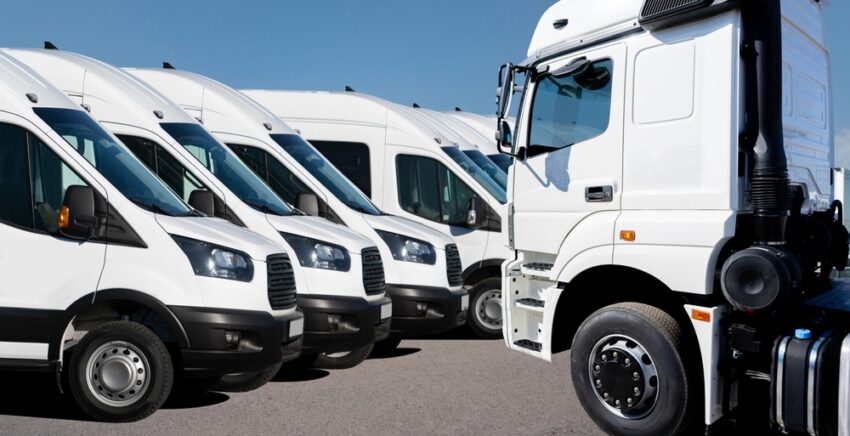Crossing state lines can shift commercial auto insurance rules overnight. Each jurisdiction enforces unique regulations, from minimum liability thresholds to additional endorsements for specialized cargo.
Non-compliance might result in steep fines or even a suspended operating authority. Know the basics of multi-state coverage and partner with a provider who keeps it simple.
Why Multi-State Coverage Matters
Picture this scenario: You manage a small trucking fleet that started out serving local routes. Over time, business booms, and your drivers begin traveling into neighboring regions. What was once a simple policy might no longer suffice if, for instance, you need to meet higher coverage limits or carry specific cargo endorsements. Multi-state operations introduce a patchwork of legal obligations that often surprise unprepared fleet owners.
Key Coverage Elements
The backbone of multi-state commercial auto insurance is liability protection. However, each state can set different minimum requirements for bodily injury and property damage. Some states insist on additional coverage types, like uninsured motorist protection, depending on local conditions. If your trucks cross multiple jurisdictions each week, your policy must be robust enough to satisfy all relevant mandates.
Streamlining Your Approach
One of the most efficient ways to handle multi-state coverage is to select an insurer specializing in commercial fleets. Because these providers routinely navigate varied regulations, they know how to craft a single policy that meets wide-ranging obligations. In particular, STAR Mutual RRG focuses on swift approvals and liability solutions shaped around multi-regional travel, helping businesses stay compliant without bogging them down in endless paperwork.
Vehicle Types and Business Classes
- Box Trucks for moving general freight
- Pickup Trucks used in lighter hauling or construction tasks
- Cargo Vans essential for last-mile delivery
- Specialty Vehicles like flatbeds or tankers
While many states share broad guidelines for commercial auto insurance, certain states have unique stipulations. For instance, passenger transport or hazardous materials hauling can trigger extra coverage needs. Always specify your business class and vehicle type up front, so your insurer can accurately calculate liability limits.
Common Obstacles
Compliance Gaps
- Missing endorsements for specialized cargo
- Outdated coverage limits failing to meet new state thresholds
Inconsistent Driver Training
- Multi-state driving demands awareness of diverse local laws
- Lack of uniform safety policies can inflate claim likelihood
Overlapping Policies
- Attempting to manage separate coverage in each state
- Higher administrative costs and confusion in claims handling
Businesses that rely on multiple single-state policies often overspend. They also face complications whenever an accident occurs in overlapping coverage zones. Consolidating into a well-structured multi-state policy saves time and reduces vulnerabilities.
Risks of Non-Compliance
Ignoring or misunderstanding interstate rules can land you in trouble. Authorities might impose fines, revoke your permit, or demand immediate changes. Beyond financial losses, non-compliance jeopardizes contracts with shippers who require robust insurance proofs before awarding new business. Additionally, accidents in states where you hold insufficient coverage lead to drawn-out legal disputes, tarnishing your company’s reputation.
Practical Steps to Ensure Readiness
Map Your Routes
- Identify all states you regularly traverse
- Check for any specialized endorsements needed (e.g., cargo type, passenger coverage)
Assess Your Current Policy
- Are you meeting the highest minimum requirement among your operating states?
- Do you have coverage for uninsured or underinsured motorists where mandated?
Evaluate Partner Resources
- Does your insurer have a track record of multi-state compliance?
- Can they rapidly add new routes or vehicles without excessive red tape?
Train Your Drivers
- Emphasize region-specific traffic laws
- Keep records of driver education to demonstrate risk management efforts
Leverage RRG Benefits
Risk retention groups (RRGs) tailor their offerings to companies that share similar risk profiles. For example, if you run a trucking enterprise, connecting with an RRG exclusively serving transportation businesses might grant you more control and potentially lower premiums. You’ll also tap into a community of fellow fleet owners who champion safe driving practices across multiple states. By sharing best practices, the group collectively drives down incidents, which in turn stabilizes insurance rates.
Growth and Expansion
As your fleet evolves, so will your coverage needs. Transitioning from local hauls to interstate or even cross-country deliveries requires ongoing policy reviews. If your business picks up new contracts in states like California or New York, each known for specific insurance rules, you’ll need swift policy amendments. The right insurer can handle these expansions smoothly, letting you seize profitable opportunities without facing bureaucratic slowdowns.
Conclusion
Navigating multi-state commercial auto requirements is all about preparation and the right partnerships. Attempting a piecemeal approach often leads to gaps, unexpected fines, or coverage shortfalls that hamper your growth. Instead, aim for a comprehensive policy crafted by specialists who understand each state’s nuances. This proactive strategy not only keeps you legal on every highway but also positions your enterprise for long-term success. By staying ahead of legislative changes, investing in driver training, and maintaining open dialogue with your insurer, you’ll minimize financial setbacks and keep your fleet rolling — no matter how many borders it crosses.

